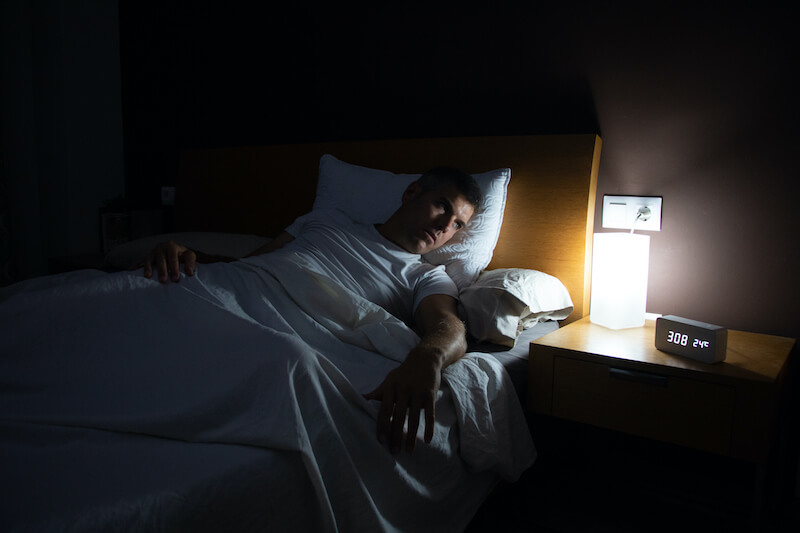Dr Guy Meadows, co-founder and clinical director of Sleep School, explains how to get a good night’s sleep.
1. Stop struggling
Sleep is a natural biological process that can’t be controlled, and battling against it could be likened to an endless game of tug of war, which only wakes you up more!
At Sleep School we’ve pioneered the use of Acceptance and Commitment Therapy (ACT), which proposes that the first step towards achieving better sleep, is to accept that you’re awake.
Once you can change the way you think and feel about not sleeping, you begin to remove the obstacles in the way of your sleep.
2. If you wake up, rest in bed
Sleep is made up of three stages: light, deep and Rapid Eye Movement (REM) sleep. Each stage has a different job, including growth and repair, mood regulation and memory processing.
Human evolution has meant you cycle between all three sleep stages every 1.5 to two hours and then briefly wake up to check for danger.
This explains why it is perfectly normal to wake in the night, and why you might find yourself even more awake than normal during stressful times.
How you respond to night-time waking determines whether you shift into a state of active wakefulness – akin to the daytime – or remain in quiet wakefulness, the bridge state to sleep.
Unsurprisingly, engaging in daytime activities such as checking your emails or social media on your phone, switching on the light to read or or getting up to make a drink, all wake you up further.
In contrast, choosing to stay in bed and rest in a state of quiet wakefulness offers many benefits similar to sleep including energy conservation, repair and memory consolidation.
It also saves your valuable energy for the day ahead, helping you to get on with living your life.

If you do wake up in the night, accept that it’s perfectly normal and try not to get frustrated
3. Label your difficult thoughts
Rumination and worry is one of the biggest factors stopping people from falling asleep. Research shows that when we attempt to get rid of our difficult thoughts, they unfortunately become stronger and more numerous.
ACT teaches you to do the opposite: to change the way you relate to your thoughts, rather than changing them.
Thought defuse is one such skill that helps you to look at your thoughts and see them for what they are (bits of words passing through your mind), rather than believing them as fact.
A simple way to do so is to give your thoughts short-hand labels and acknowledge them with a friendly greeting whenever you notice them arrive in the mind.
For example, if you notice worries about not being able to cope if you don’t sleep, you can practise saying something along the lines of, “Hello ‘Sleep’ thoughts, thanks for showing up.” The moment you say that, you create mental space between you and them.
4. Keep a regular sleep-wake cycle
Keeping an irregular sleeping pattern creates an effect known as ‘social jetlag’, whereby the brain starts to sleep and wake up at the wrong times.
Going to bed and getting up at roughly the same time each night, even on the weekends, helps to keep your body clock on time and promote a strong link between bedtime and good-quality sleep.
5. Be present
Worrying about the past or catastrophising about the future promotes nighttime wakefulness. Focussing your attention on something in the moment, such as the movement of your breath, can therefore be helpful.
Aim to notice the rise and fall of each breath moment by moment. Each time your mind wanders onto worry, practise gently returning back to focussing on the breath and the present moment.
Remember, the intention is not to have an empty mind, but rather to train your skills at noticing and letting go of difficult thoughts.
The Sleep School mobile app is available now. Download and sign up for a free 7-day trial before upgrading to a yearly subscription of £29.99 per year.







